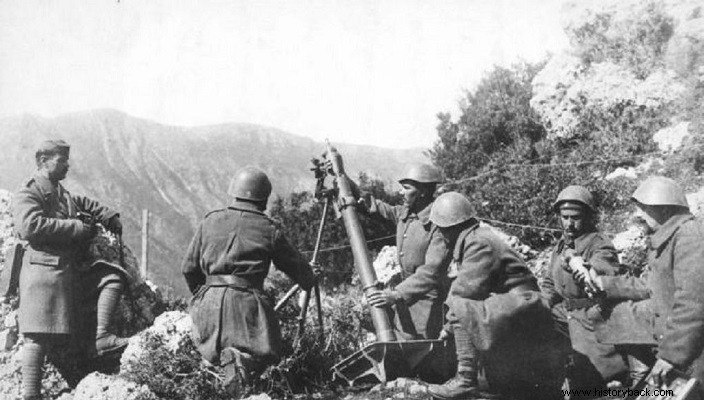
The Battalion is a self-contained battle group capable of undertaking and executing a mission by its own means alone. This is what the relevant definition states. But in the Greek Army of 1940 this was not the case because the infantry battalions lacked mortars and anti-tank means.
The battalion fielded a command team, three infantry companies, a machine gun company and battle transports. Of heavy weapons, it had 12 machine guns and 36 machine guns. The battalion had its three companies as a maneuver element and its machine gun company as a fire element.
The administration team consisted of scribes, physician, observers, couriers and messengers. Commanded by adjutant or second lieutenant. Assistant to the major was the battalion staff captain. Each company extended four platoons and wrong platoon three battle groups .
The battalion commander was able to act on two or three parallel, converging, or diverging directions and depending on the terrain and the strengths of the enemy location he could adjust the energy of his companies by providing them with direct support with the machine gun company. The theoretical strength of the battalion exceeded 900 men.
According to Davakis, the battalion commander "is the true director of the orchestra of the instruments of the infantry units participating in the fight, which he directs according to the desired task...He thus becomes the true combiner of fire and movement, the real leader of the Infantry".
The battalion chief was supposed to be the one who commands, but also inspires his officers and men. Especially in a fight on a wide front, more than 2 km which was considered the maximum possible that, under normal conditions, an infantry battalion could cover in defense , the role of the head of the battalion was extremely important as many times the Greek battalions were called upon to act independently, beyond the supervision but also the support of the respective regiment, with poor connections and supply difficulties.
Based on the terminology of the time, the division covered a front "sector", the regiment covered a "sub-sector", the battalion covered a front "lane", and each company a "sub-lane".
The infantry battalion, depending on the tactical situation, was deployed in a triangle formation, with one company in front, or in an inverted triangle formation, with two companies in front and one in reserve. Of course, if the situation required it, he could deploy all of his companies to the front line, but always keeping at least a small reserve of at least an infantry ulama - two platoons.
In addition to the infantry battalions, the Greek Army in 1940-41 fielded a number of machine gun battalions. These battalions were divided into Position machine gun battalions and Movement machine gun battalions with two or three machine gun companies and a rifle company.
The constitution
The infantry regiment was commanded by a colonel or lieutenant colonel and had a staff, command company, three battalions, a machine company and corps transports. The regimental staff was commanded by a lieutenant colonel or major. This included the adjutant of the regiment, the liaison officer with the relevant division and the chief medical officer of the regiment.
The command company had a command platoon, a liaison and communications platoon, a mounted scout platoon, an Engineer (pioneer) platoon, Medical elements and battle transports. The command platoon included the scribes, equerry, couriers and regimental standard bearer.
The communications platoon had a radio telegraph team, a telegraph team, an optical telegraph team and an observer team. The platoon of mounted scouts was commanded by a non-commissioned officer and was equivalent to a cavalry ulama. The Engineer platoon had a construction team, a demolition team and combat transports.
The machine company of the Greek infantry regiment had a platoon with two 65mm mountain guns, a mortar platoon, with four 81mm tubes and the corresponding transporters. In terms of automatic weapons the regiment had 36 machine guns and 108 machine guns and also had 144 grenade launchers. Each infantry regiment had a strength of 3,200 men and 777 animals.
The regiment had as a maneuver element the three battalions. Its support echelon with just four mortars and two light guns was very poor compared to that of other armies of the time.
Italian infantry regiments also had three infantry battalions and a heavy weapons company. And their group armament consisted of six 81mm mortars similar to the Greek ones, 54 Brixia 45mm light mortars, 24 machine guns and 108 machine guns.
The Greek Army fielded in 1940 56 infantry regiments, four movement machine gun battalions with 36 machine guns each, 1 movement machine gun battalion with 24 machine guns and four position machine gun battalions with 24 machine guns each. 2/39, 3/40 and 5/42 were Evzone regiments.
